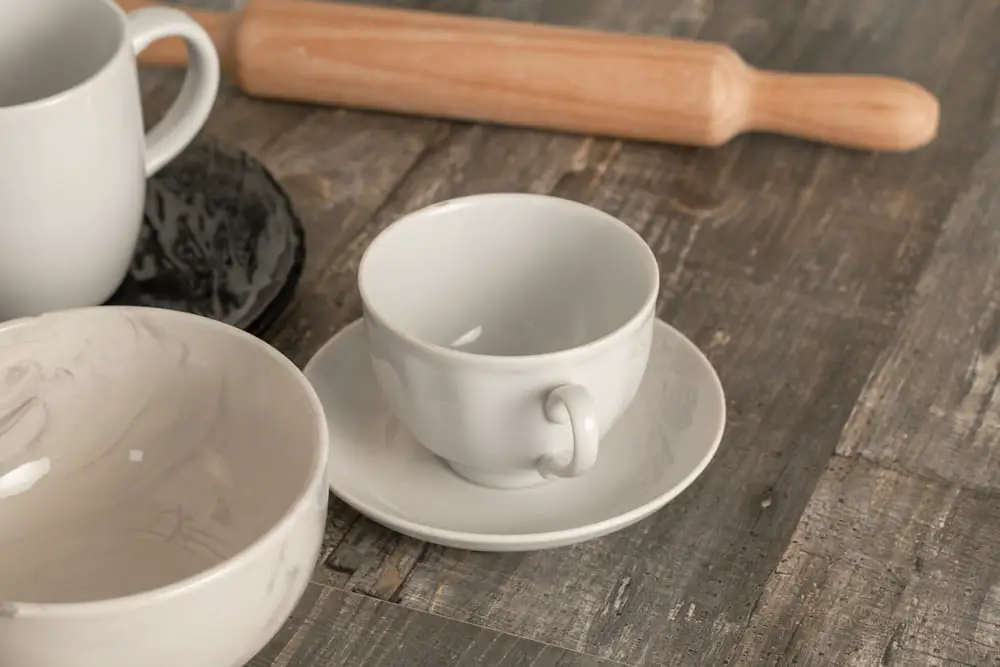Characteristics of ceramics
Ceramics have compressive strengths that are around 10 times greater than their tensile strengths. Technical ceramics offer excellent mechanical properties, durability, fatigue resistance, temperature resistance, and a low density. After a thermal shock, which causes the ceramic material to expand, the ceramic can endure temperature fluctuations without cracking, breaking, or reducing mechanical strength. Therefore, it is a great electrical and thermal insulator regarding conductivity.
Heat resistance experiment of fine ceramics
Traditional ceramics are famous for their temperature durability, but fine ceramics are even better. Before finding out how hot ceramic, in general, can get before it breaks, here is an experiment testing the heat resistance between fine ceramics (alumina) and aluminum to show you how hotter fine ceramics can withstand compared to one of the metals. Please note that the melting point of aluminum is 660,3 °C (1220,54°F).
This experiment refers to a Youtube video belonging to Fine Ceramics World. The heat-resistant properties of Fine Ceramics are measured by the temperatures at which they begin to melt, and by their levels of thermal shock resistance. During the process, burn two test pieces of fine ceramic and aluminum at the same angle within 5 minutes. The highest temperature peak in the experiment is about 1000 °C (1832 °F). After the first minute, both materials haven’t changed much. The third minute was reached, and the surface at the burned angle of the aluminum test piece began to melt while the ceramic piece’s stayed unchanged. When the time was up, the condition of the two test material models was recorded as the aluminum piece melted at its angle, and the fine ceramic one still almost kept its original shape as it only melted at a very small spot.
Typically, ceramics have much higher melting temperatures than metals according to their high bond strengths. Most ceramics have a melting temperature above 2000°C (3632 °F). This means that they are often used in high-temperature applications.
How hot can ceramic get before it breaks?
There are a variety of ceramics as their highest temperatures are different. Ceramics generally can withstand high temperatures, such as temperatures that range from 1,000 °C to 1,600 °C (1,800 °F to 3,000 °F). The average is 1280°C – 1340°C (2336 °F- 2444 °F), and there is also a special 1400 °C which is 2552 °F; but the fired ceramic only withstands under 700 °C – 800°C. Industrial ceramics: some ceramics can reach about 2600 °C (4712 °F) (alumina ceramics in the “heat experiment”: melting point 2050 °C (3722 °F), boiling point 3000 °C (5432 °F)). If the heat level is raised above the ceramic’s highest temperature, it might be distorted, cracked, or broken.
Thermal shock to ceramics
Usually, ceramic breaks due to thermal shock. Thermal shock is a variation in temperature which causes tension in a material. Despite the high melting point and boiling point, ceramics are especially prone to thermal shock breakdown due to their poor toughness, high Young’s modulus, and low thermal expansion. It frequently causes breakage in the material and is most common in brittle materials such as ceramics. Ceramics tends to expand when it comes into contact with heat. However, when temperatures fluctuate quickly, the material must be able to adapt to adjust for the extension. Metals and plastics can generally flex sufficiently enough to compensate for this, but most ceramics (because of their brittleness) cannot break as a result.
Are ceramics and porcelain similar? And at what temperature does porcelain break?
Many people use porcelain in their residences. Porcelain is often used in floors and worktops, in addition to being an excellent material for bathtubs, sinks, and toilets. If you’re remodeling and want to utilize a long-lasting material that can withstand high heat and other sorts of wear and tear, porcelain tiles are an excellent alternative.
Basically, ceramics and porcelain are not completely the same. Porcelain is a specialized type of ceramic because it is ceramic which is glazed. The main difference between porcelain and ceramic is the method of manufacture. Both of them are formed of clay and fired in a kiln, while porcelain is manufactured from finer clay and burnt at higher temperatures. As a result, it is denser and more durable than ceramic.
Both materials offer excellent heat resistance. However, porcelain is less likely to crack under extreme heat, whereas ceramic can become damaged, cracked, or even change shape when exposed to extreme heat. When compared to generally fired ceramics (not the alumina ceramics used for the industry), the melting point of porcelain is considered to be higher, at 1927 °C which is 3500.6 °F.
Because porcelain is fired at such a high temperature, it is a heat-resistant type of material. For porcelain to crack, it would need to be at a temperature that is higher than 1426,67 °C or 2600 °F, which would be extremely high temperatures. Porcelain is also an ideal material to withstand thermal shock without cracking or breaking.
In conclusion, we see that both ceramic and porcelain are materials that have high temperature and excellent heat duration which mean they can bear high temperature up to more than 1000°C (1832°F) and 1900°C (3452°F) respectively. For industrial ceramics or alumina, the temperature this amazing material can withstand is even much more than the general ceramics due to the heat resistance experiment.
